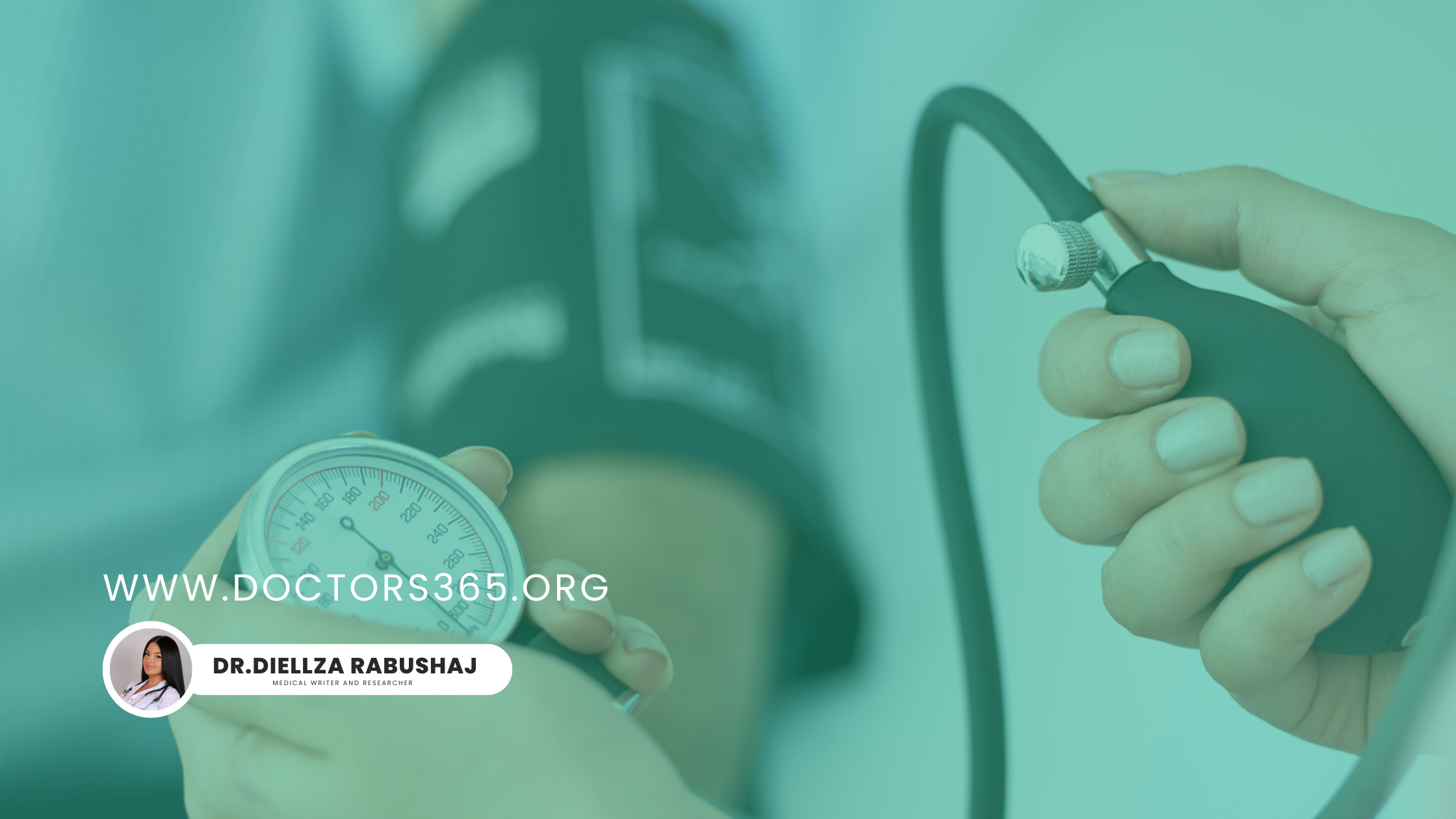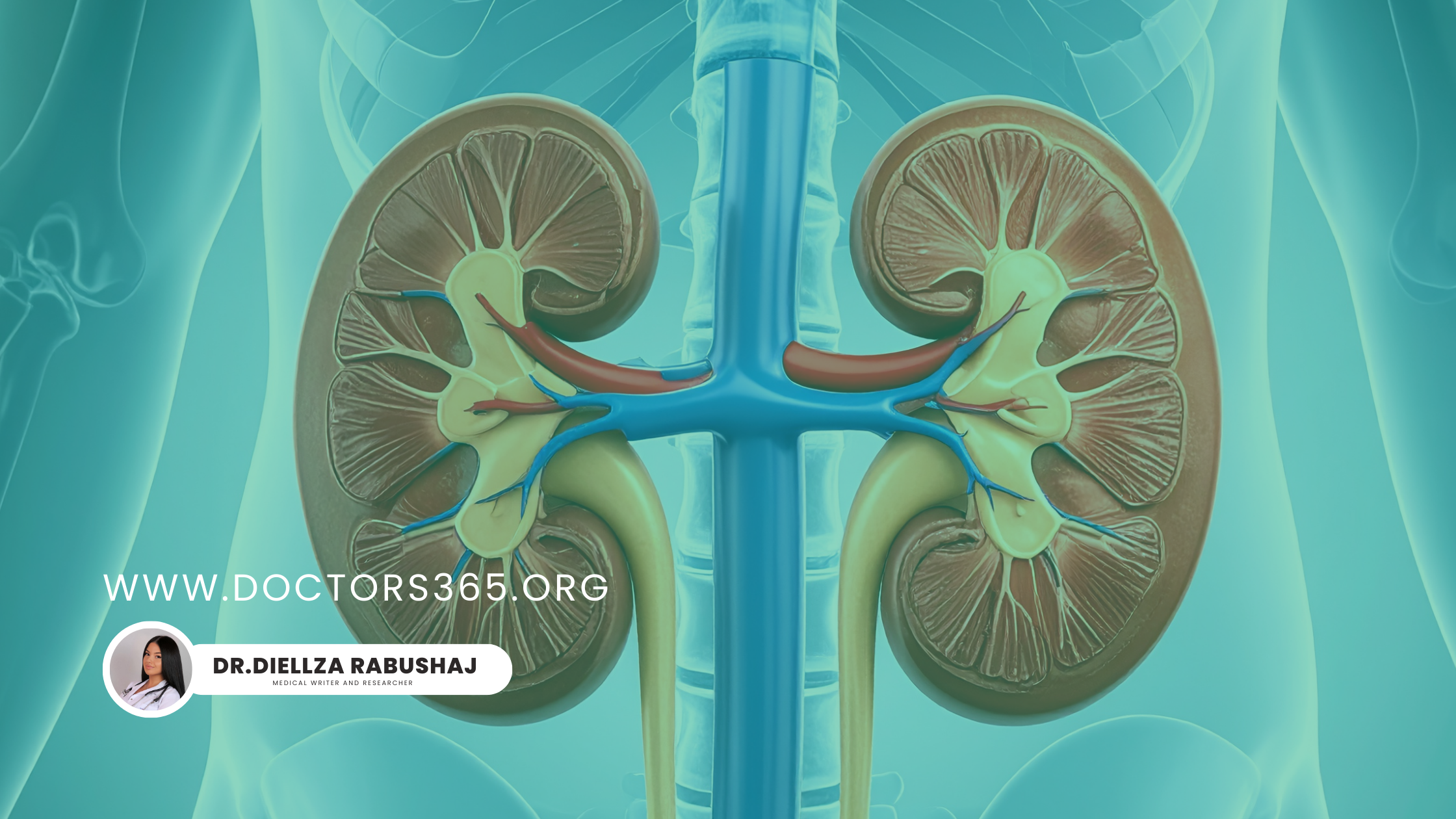
Cardiology
Control BP from Home
Learn how virtual cardiology improves blood pressure control. See evidence, what to expect, pricing, and book trusted Doctors365 cardiologists today.
Hypertension remains a leading cause of cardiovascular events, yet control rates lag. Telemedicine brings proven solutions home: regular check‑ins, home BP monitoring, and fast medication adjustments. Evidence shows better control versus usual care, reduced overtreatment from white‑coat readings, and meaningful systolic reductions—especially for patients with greater information needs. On Doctors365, you can browse multilingual cardiologists, pick a time, pay securely, and join an encrypted video visit from any device. Every appointment ends with a written plan, e‑prescription when appropriate, and clear follow‑up. Transparent pricing and 24/7 booking make it simple to start today.
Disclaimer: This article is for educational purposes only and is not a substitute for professional medical advice, diagnosis, treatment, or emergency care. If you think you’re having a medical emergency (for example, severe chest pain, shortness of breath, neurological symptoms, or a hypertensive crisis), call your local emergency number immediately.
Author: Dr. Diellza Rabushaj
1. Why talk about telemedicine for high blood pressure—right now?
Hypertension affects nearly one in three adults worldwide and remains the leading modifiable risk factor for stroke, heart attack, kidney disease, and premature death. The problem isn’t only detection—it’s day‑to‑day control. That’s where telemedicine shines. From secure video visits and home blood pressure (BP) monitoring to app reminders and medication reviews, virtual care addresses the biggest hurdles: access, adherence, and continuity of care [1–3].
Bottom line: Telemedicine doesn’t replace good medicine—it extends it into your home, quietly improving the numbers that matter.
2. What the evidence says
A quick tour of the strongest takeaways from research you care about:
- Better BP control vs usual care: Reviews of randomized studies show that telemedicine—especially when paired with home BP monitoring—can reduce BP and raise control rates compared with standard clinic-only care [1].
- Safer, smarter prescribing: In urban primary care settings, telemedicine helps avoid overtreatment by revealing higher in-office readings that don’t match home values (white-coat effect). One cohort saw in-office “uncontrolled” BP fall from 72% to 45% when viewed through telehealth/home readings, with no significant change over time from first telehealth to last in‑office visit (45%→41%) [2].
- Works in low- and middle-income settings too: Automated check-ins plus home BP logs drove meaningful systolic BP drops overall (≈4 mmHg) and even larger reductions (~9 mmHg) among patients with lower literacy or greater information needs [3].
- Continuity during disruptions: Virtual care maintained hypertension management during pandemics—keeping refills, medication reviews, and titrations on track when clinics were limited [1].
What this means for you: Telemedicine can help you and your doctor see the real pattern of your BP, fine‑tune medicines, and stick to a plan that fits your life.
3. How Doctors365 works (simple step‑by‑step)
1) Browse: Go to doctors365.org and explore specialists.
2) Pick a time: Choose a slot that works for your schedule—often same‑day.
3) Confirm & pay: Transparent, upfront fees; pay securely online.
4) Secure visit: Join by phone, tablet, or computer—HIPAA‑grade encryption and privacy.
5) Summary & prescriptions: Get a written visit summary, e‑prescriptions, lifestyle plan, and follow‑up.
Ready to start? Book a cardiology appointment here:
4. Meet our cardiology specialists for hypertension (book now)
Choose a doctor who matches your needs and language.
- Dr. Andreas Mussigbrodt — Family Medicine & Cardiology (languages: 🇩🇪 German, 🇪🇸 Spanish, 🇫🇷 French).
Book: here on doctors365.org. - Dr. Stojan Mitreski — Cardiology (North Macedonia; multilingual).
Book: here on doctors365.org. - Dr. Christos Varounis — Cardiology (Greece).
Book: here on doctors365.org.
Or explore all cardiologists: here
5. Telemedicine toolbox: what happens during an online BP visit?
A typical hypertension tele-visit includes:
- Home BP review: Your clinician reads your log (ideally 7–14 days of AM/PM readings).
- Pattern analysis: Morning surges? Evening spikes? White‑coat vs masked hypertension?
- Medication optimisation: Start/stop/titrate based on trends, side effects, and kidney/electrolyte status (labs ordered as needed).
- Lifestyle coaching: Salt, sleep, stress, steps—easy wins explained simply.
- Monitoring plan: Frequency of checks, thresholds for messages, and follow‑up cadence.
- Shared decisions: Practical choices you can live with (once‑daily meds, fixed‑dose combos, reminders).
This approach—structured, frequent, and data‑informed—is exactly what studies credit for better control and lower risk [1–3].
6. Why telemedicine helps control blood pressure
6.1 Accountability without hassle
Small, regular touchpoints create momentum. Think 10‑minute check‑ins rather than waiting 6–12 months between clinic visits [1].
6.2 Medication fit—then fine‑tune
Telemedicine enables timely adjustments—add a diuretic, split dosing, or switch classes when side effects appear—before weeks of poor control accumulate [1–3].
6.3 Real‑world numbers beat “one‑off” readings
Home readings reduce white‑coat effects and avoid overtreatment; in some cohorts, “uncontrolled” office BPs looked quite different at home [2].
6.4 Equitable by design
Automated calls, SMS, and simple BP devices work even for patients with low literacy; the largest gains in systolic BP were seen among those with higher information needs [3].
7. Is telemedicine right for your type of hypertension?
Most people with uncomplicated primary hypertension can be largely managed online, especially after an initial lab panel. Telemedicine is particularly helpful if you:
- Have inconsistent office BPs (suspected white‑coat or masked hypertension).
- Need structured follow‑up to reach <140/90 mmHg (or lower, as individually targeted).
- Are starting, switching, or tapering medications and want quick feedback.
- Live far from clinics, have mobility constraints, or a busy schedule.
- Prefer frequent, shorter contacts to stay on track.
If secondary causes are suspected (e.g., primary aldosteronism, renal artery stenosis, OSA), your cardiologist can order targeted tests and arrange in‑person assessments when needed.
8. What’s online‑appropriate vs. in‑person?
Great for telemedicine
- Stable follow‑ups, medication titration, lifestyle coaching.
- Interpreting home BP logs, ambulatory BP results, and labs.
- Addressing side effects (e.g., cough on ACE‑i, diuretic‑related cramps) and adherence strategies.
Needs in‑person (soon)
- Newly detected severe hypertension with symptoms (chest pain, neurological deficits, confusion).
- Persistently ≥180/120 mmHg or ≥160/100 mmHg with concerning symptoms.
- Suspected secondary hypertension requiring specific exams or imaging.
- Complications (e.g., heart failure signs, progressive kidney dysfunction).
Emergency—call immediately
- Chest pain, severe shortness of breath, weakness on one side, difficulty speaking, vision loss, severe headache unlike usual.
9. Benefits of Doctors365 for hypertension care
24/7 access & flexibility
Book evenings, weekends, or lunch breaks. No travel, no waiting room.
Privacy & security
End‑to‑end encrypted platform, compliant with medical privacy standards.
Continuity & convenience
Same clinician or coordinated team for follow‑ups; refills and lab forms handled promptly.
Cost‑effective
Transparent fees, short targeted visits, fewer missed workdays, and reduced transport costs [1–3].
Data‑driven decisions
Your doctor sees your home readings and trends—not just a single clinic value.
10. Quality & trust you can see
- Verified specialists: Credentials and experience are checked.
- Clinical governance: Internal peer review, auditing, and escalation pathways.
- Secure records: Encrypted storage; you control access to your data.
- Clear communication: Written visit summary and next steps after every appointment.
11. Practical prep: get the most from an online BP visit
Before your appointment
- Measure correctly for 7 days: Morning and evening, two readings each, seated, back supported, feet flat, arm at heart level; average the last two readings.
- Use a validated cuff: Upper‑arm, right size; avoid finger/wrist devices unless validated.
- List all meds & supplements: Include doses and times.
- Note symptoms & triggers: Headaches, dizziness, snoring, swelling, high‑salt meals.
- Have your device handy: Bring your BP monitor to the camera to verify technique if needed.
During the visit
- Share averages, outliers, and timing (morning surge? evening spikes?).
- Discuss lifestyle: salt, alcohol, sleep, exercise, stress, and adherence challenges.
- Agree on thresholds for messages (e.g., “Contact us if >160/100 twice in a row”).
After the visit
- Follow the titration plan; set app reminders.
- Book follow‑up in 2–6 weeks to review response.
- Upload readings or send photos of your BP log.
12. Medication conversations that work well online
- Start smart: Thiazide‑type diuretics, ACE‑i/ARB, long‑acting calcium channel blockers—individualized to age, comorbidities, and ethnicity.
- Simplify: Prefer once‑daily options and fixed‑dose combinations to reduce pill burden.
- Side effects: Troubleshoot promptly (e.g., edema on amlodipine—consider combination with ACE‑i/ARB or dose adjustment).
- Adherence aids: Blister packs, reminders, and “habit stacking” with daily routines.
- When BP is high at home but okay in office (masked HTN): Your doctor may intensify therapy with closer monitoring.
- When BP is high only in clinic (white‑coat HTN): Avoid overtreatment; decisions rest on home/ambulatory values [2].
13. Lifestyle upgrades you can actually keep
- Salt: Aim for <5–6 g/day (≈1 tsp), watch hidden sodium (bread, sauces, cured meats).
- Weight & waist: Even modest loss (5–10%) helps.
- Movement: 150 minutes/week moderate activity + 2 strength sessions. Start where you are.
- Alcohol: Keep intake light and consistent; avoid binge patterns.
- Sleep & stress: Prioritize 7–8 hours; try breathing drills, short walks, mindfulness.
- Stop smoking: Ask about pharmacotherapy and counselling options.
Tele-visits make these changes stick by breaking them into small, weekly wins [1–3].
14. Where telemedicine is headed for hypertension
15.1 Smarter devices
Cuffs that sync automatically, patches for continuous BP estimation, and validated wearables feeding secure dashboards.
15.2 Team‑based digital care
Cardiologists, family physicians, and pharmacists co‑manage titrations while health coaches reinforce habits between visits.
15.3 Precision targets
Algorithms will highlight your personal BP rhythm (morning vs evening responders), medication timing, and salt sensitivity—so plans feel bespoke, not generic.
15.4 Inclusive design
Multilingual apps, phone‑based systems (not just smartphones), and low‑bandwidth modes make high‑quality care accessible everywhere [3].
15. Strong reasons to choose Doctors365
- Convenience without compromise: Same‑day access to experienced cardiologists.
- Evidence‑guided: Care pathways reflect what the best studies show—more touchpoints, better control, fewer adverse events [1–3].
- Clear next steps: Every visit ends with a written plan you can follow.
16. Ready to take control? (CTA)
Book your cardiology tele-visit now:
Prefer to choose directly?
- Dr. Andreas Mussigbrodt — Family Medicine & Cardiology (languages: 🇩🇪 German, 🇪🇸 Spanish, 🇫🇷 French).
Book: here on doctors365.org. - Dr. Stojan Mitreski — Cardiology (North Macedonia; multilingual).
Book: here on doctors365.org. - Dr. Christos Varounis — Cardiology (Greece).
Book: here on doctors365.org.
17. FAQs
17.1 How often should I check my BP at home?
For most people: morning and evening for 7 days before each visit, then a few times per week once stable. Your doctor may tailor this.
17.2 Can my medication be started or adjusted online?
Yes. Your doctor can initiate or adjust therapy based on home readings and recent labs, then arrange in‑person visits if needed.
17.3 Do I need special equipment?
A validated upper‑arm BP monitor is enough. If you already have a device, bring it to the camera to confirm cuff size and technique.
17.4 What if my readings are high?
Follow your action plan. If you get repeated readings ≥160/100 mmHg or you feel unwell, message your doctor the same day. For severe symptoms (chest pain, neurological deficits, severe breathlessness), call emergency services immediately.
17.5 Will insurance reimburse telemedicine visits?
Coverage varies by country and plan. Our fees are listed upfront; you’ll receive receipts you can submit where applicable.
19. References
- Omboni S. Telemedicine for hypertension management: where we stand and where we are headed. Connected Health. 2022.
- Kerai A, Meda N, Agarwal K, Garg M, Deb B, et al. The use of telemedicine to improve hypertension in an urban primary care clinic and predictors of improved blood pressure. Journal of Primary Care & Community Health. 2023.
- Piette JD, Datwani H, Gaudioso S, Foster SM, Westphal JA, et al. Hypertension management using mobile technology and home blood pressure monitoring: results of a randomized trial in two low/middle-income countries. Telemedicine and e-Health. 2012.
.
Recommended articles for You

Evidence-based online ED care with real doctors, not just pill websites.

Discover how personalised medicine in bladder and urological cancers fits into convenient, secure online care with Doctors365 specialists.

What online doctors prescribe most often, and how Doctors365 can help you use these medicines safely.